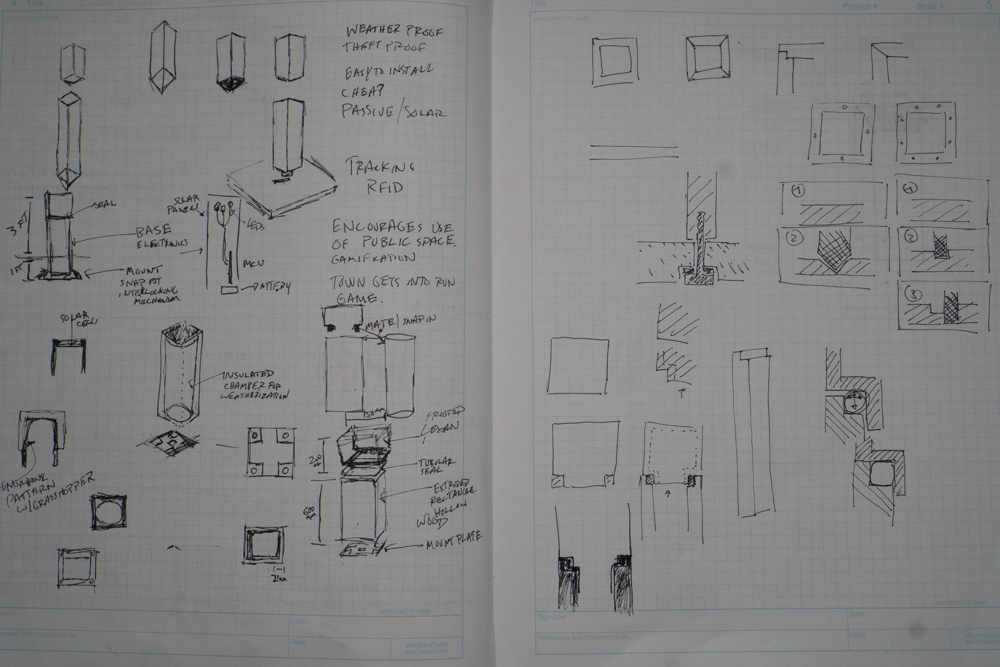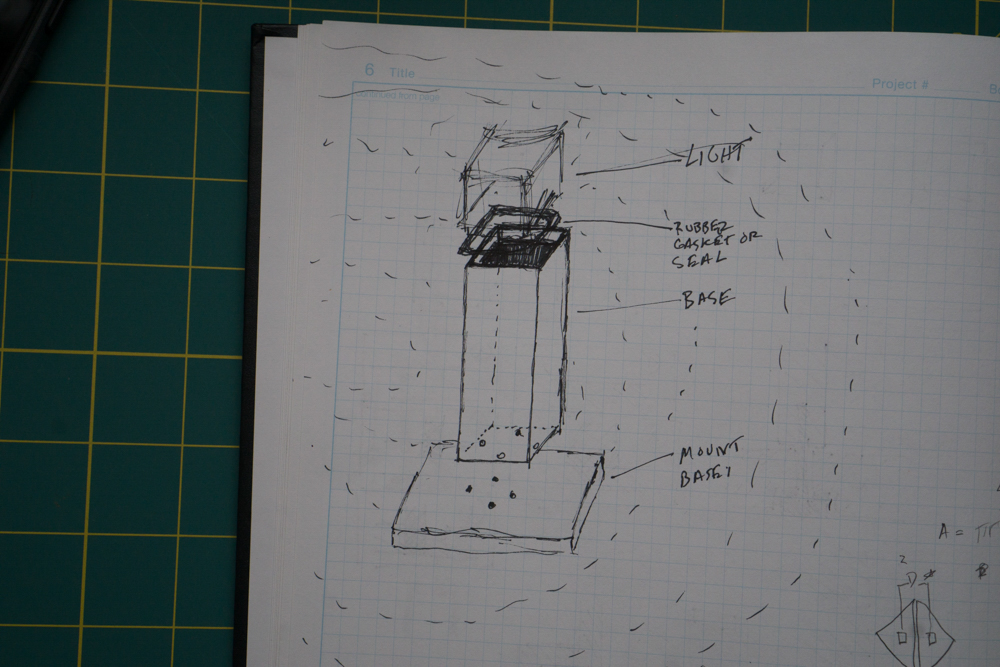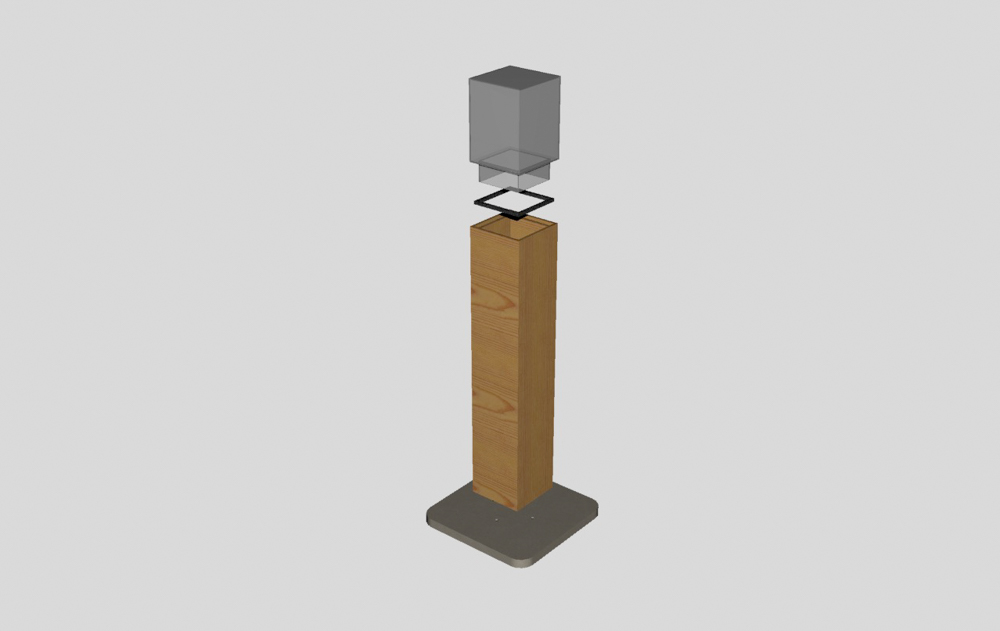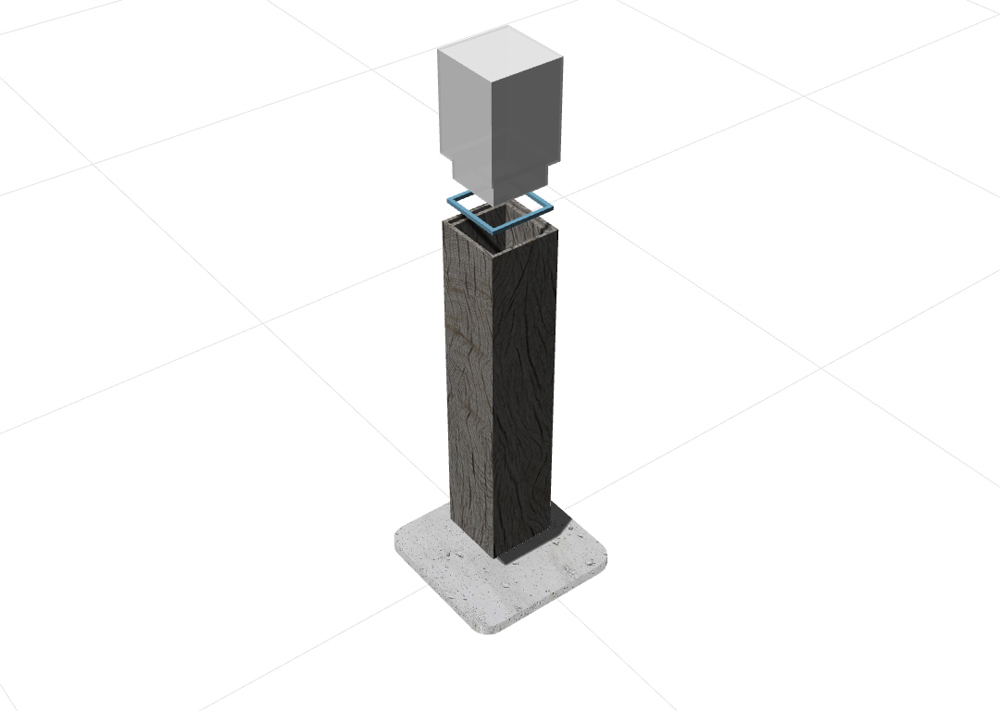Week 1 - Final Project Proposal
This first week is about Modeling (raster, vector, 2D, 3D, render, animate, simulate, …) a possible final project.
OVERVIEW The goal with the final project is to synthesize a range of skills in order to rapidly test and iterate on an idea. That means the project needs to reflect challenges in 3D modeling, fabrication, embedded systems programming, and interactivity.
My concept for a final project is a connected trail light for public spaces. This product is rooted in the idea of intervention - strategically altering a context and experience to influence behavioral change. My hope is to improve communities by encouraging positive shifts in individual behavioral patterns. Healthier people build healthier communities.
This product would play two roles in the context of a public running trail.
- It provides light when it is dark. Running trails can be dangerous in the early morning and at night due to the lack of artificial or natural light. Well-lit public spaces
- It works with a collection of trail lights to create interactivity in the environment (the light reacts to users) and logs a user’s activity. It would not only change its display as a user passes but it would also log their progress if they signed in.
REQUIREMENTS
- Low-cost (feasible for parks & recs departments to implement)
- Self-sufficient energy source (solar)
- Internet-connected
- Simple to ship & install by low-skill labor
- Resilient to weather and human fouling
- Requires little interaction / hardware from users
- Beautiful and joyful to pass
Process
The form and function of the light was somewhat obvious, due to the requirements that this be low-cost and easy to install. I did a bit of sketching to work out some basic details about what I wanted to model and quickly moved into testing out software.

I considered a variety of approaches for logging a user’s run in a public context (as opposed to using a FitBit or personal device to log activity). I settled on the light because of its aesthetic qualities and base functionality — every community understands the value of well-lit spaces. Additionally, the electronics and programming for such a product are well documented (read: this is achieavable for me).

I’m new to CAD / modeling but have some clear ideas on how to approach this product. I experimented with Antimony a bit and found it a bit unintuitive. I spent a bit of time in Rhino as well but found myself missing the sketch-based approach that is enforced with traditional methods. I found myself missing OnShape, the web-based CAD system created by the founders of SolidWorks. I took a few tutorials in OnShape over the summer and wanted to dig a bit deeper into it.

I relied on basic shapes. My design intent was to that the proportions should remain the same but size of the assembly should be able to be experimented with either through changes to the base dimensions or the height of the light enclosure (for example). The resulting model was constrained somewhat quickly with just enough dimensions declared to make a parametric model based on my simple goals.

I experimented with textures and rendering in both OnShape and in Rhino. At the end of the day, I preferred Rhino for rendering. This was more a fact of my limited experience though. I did try a composite image with the light in a photo but it turned out bad…to say the least…


